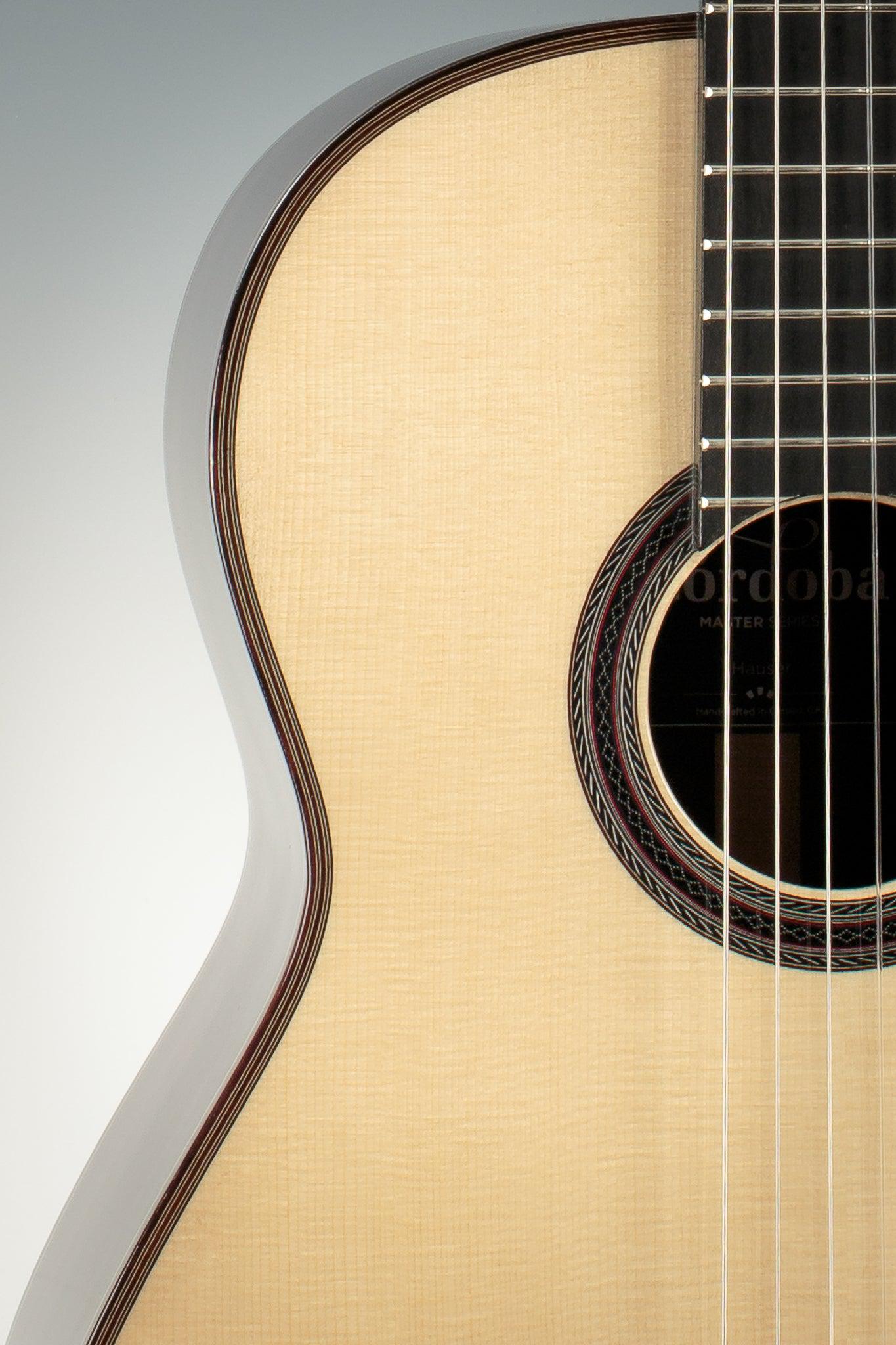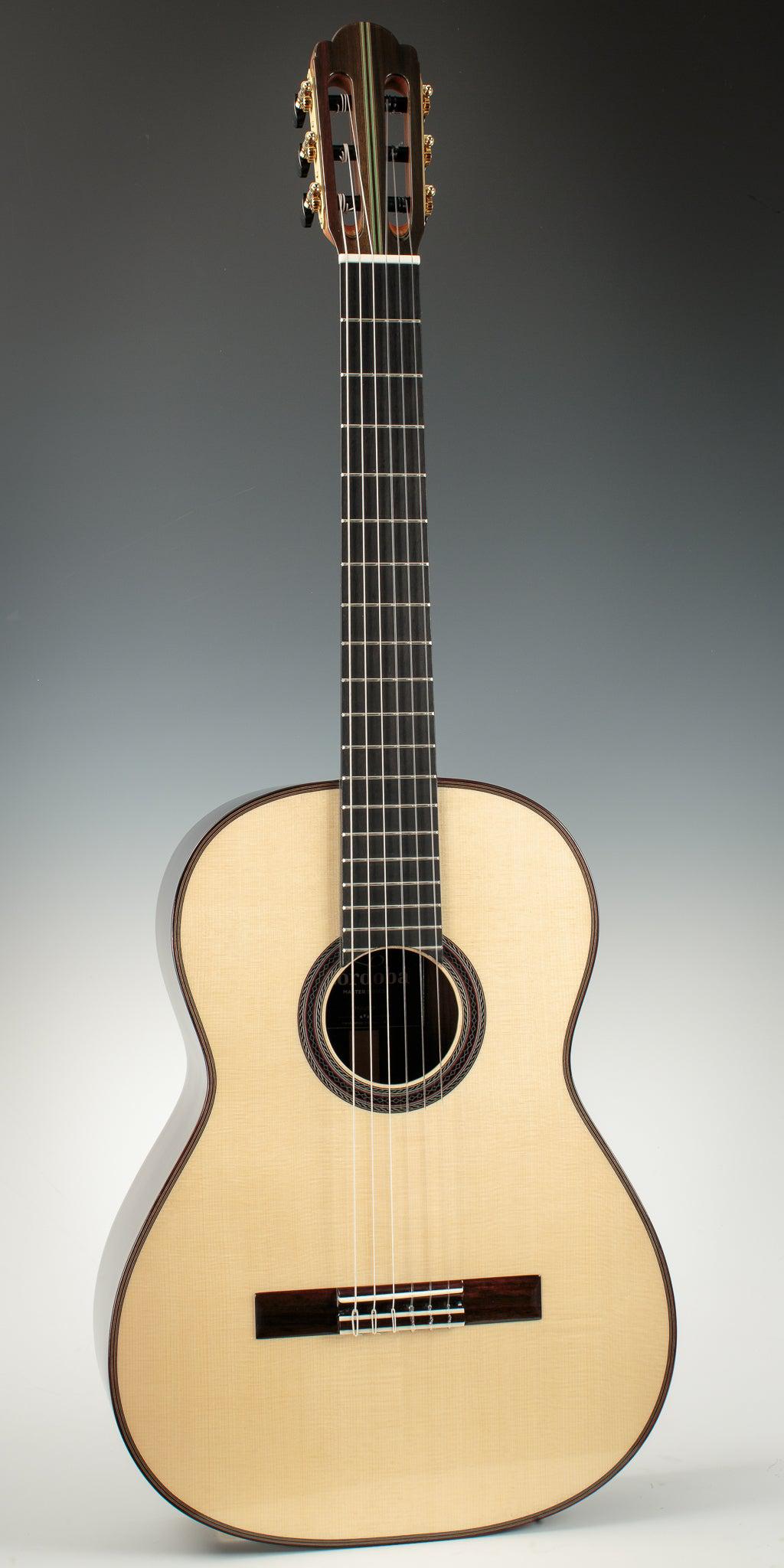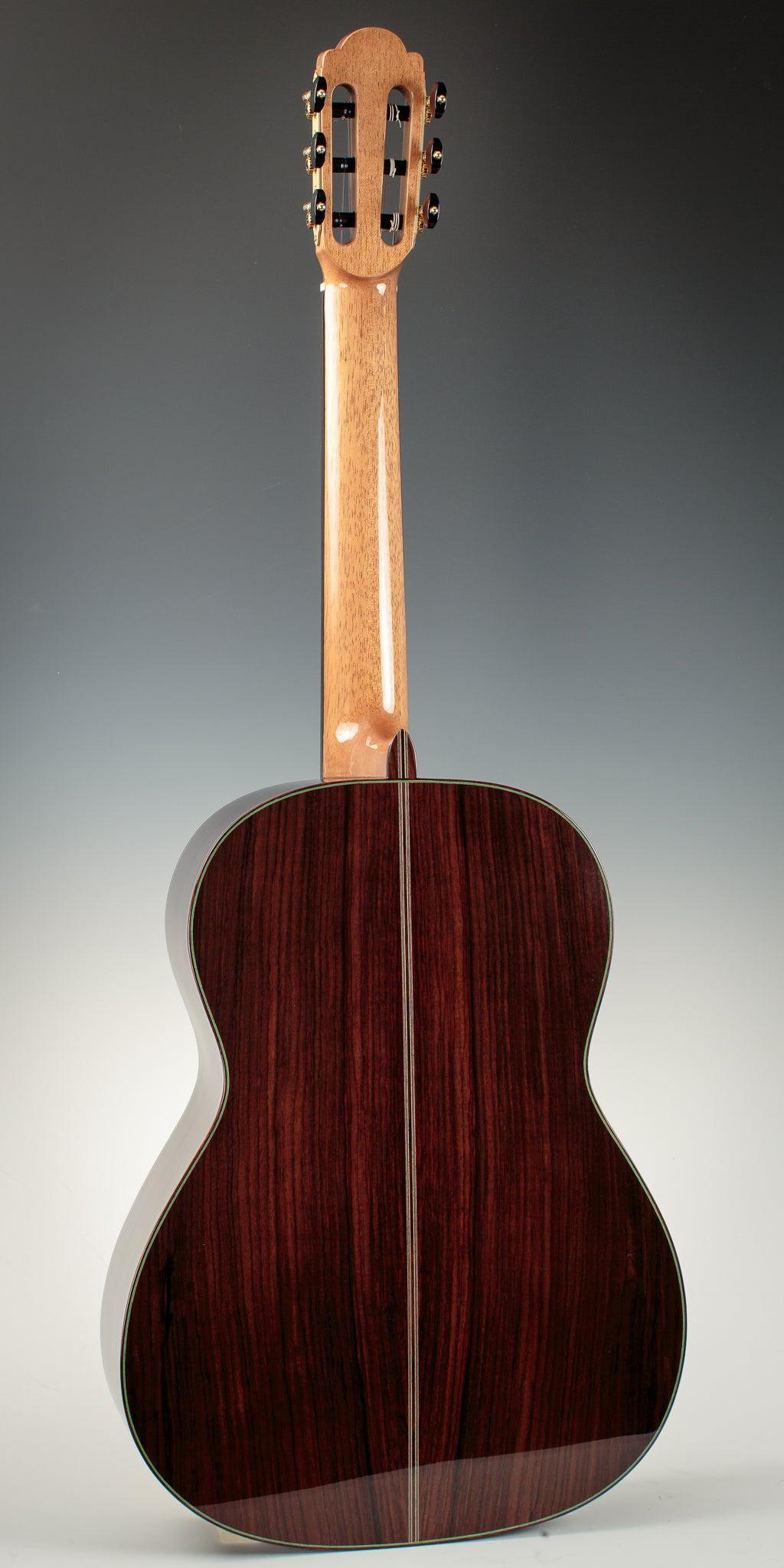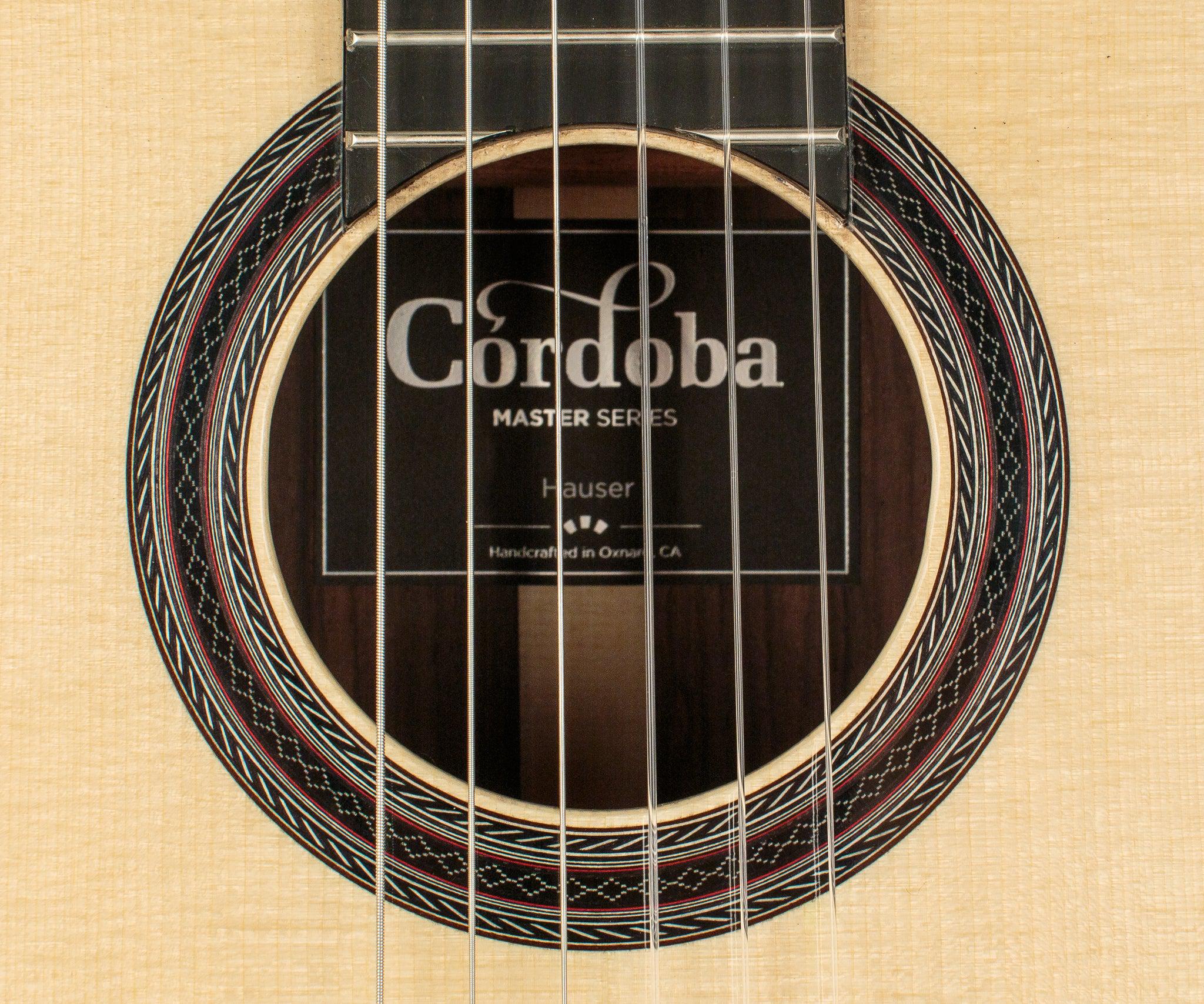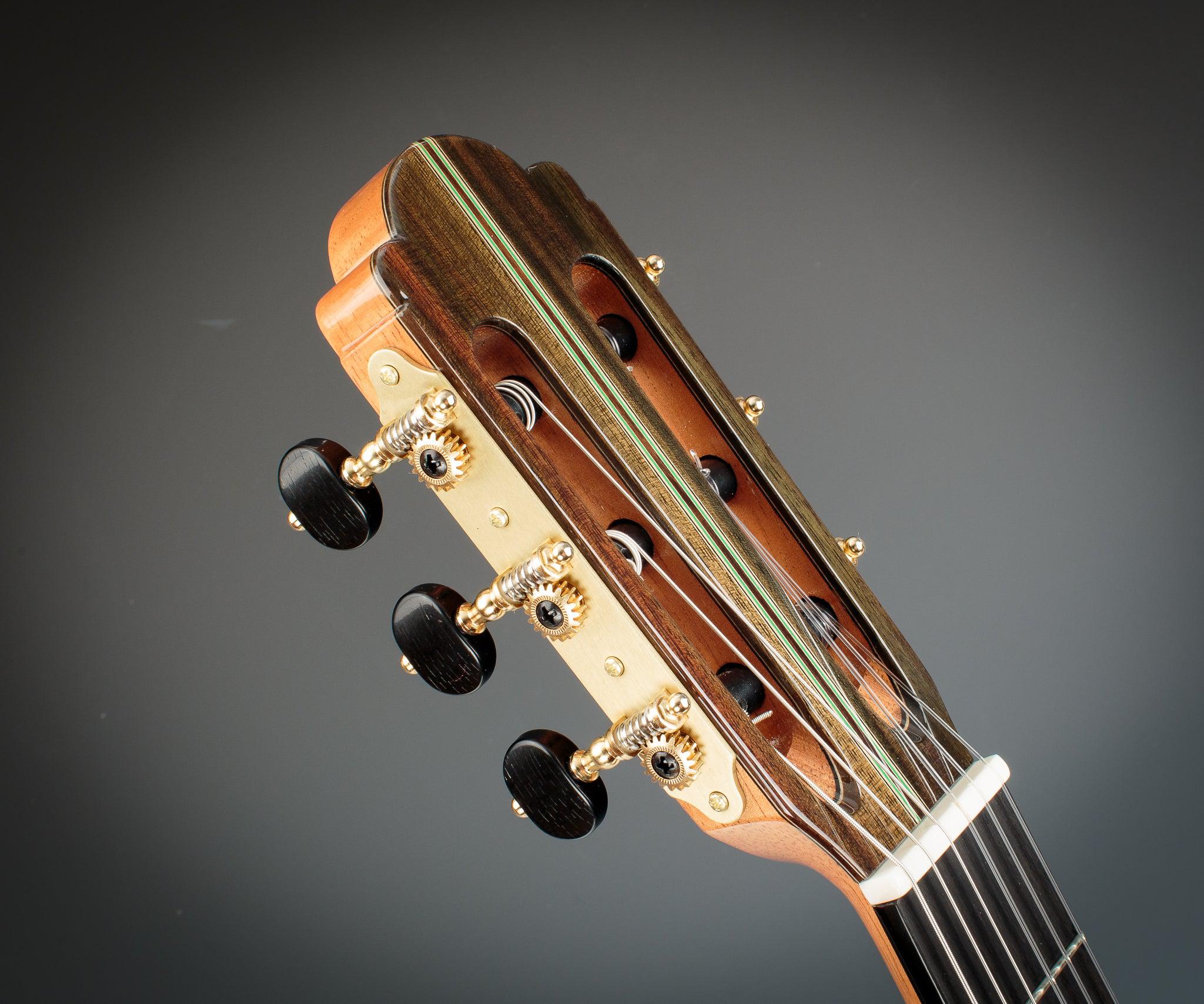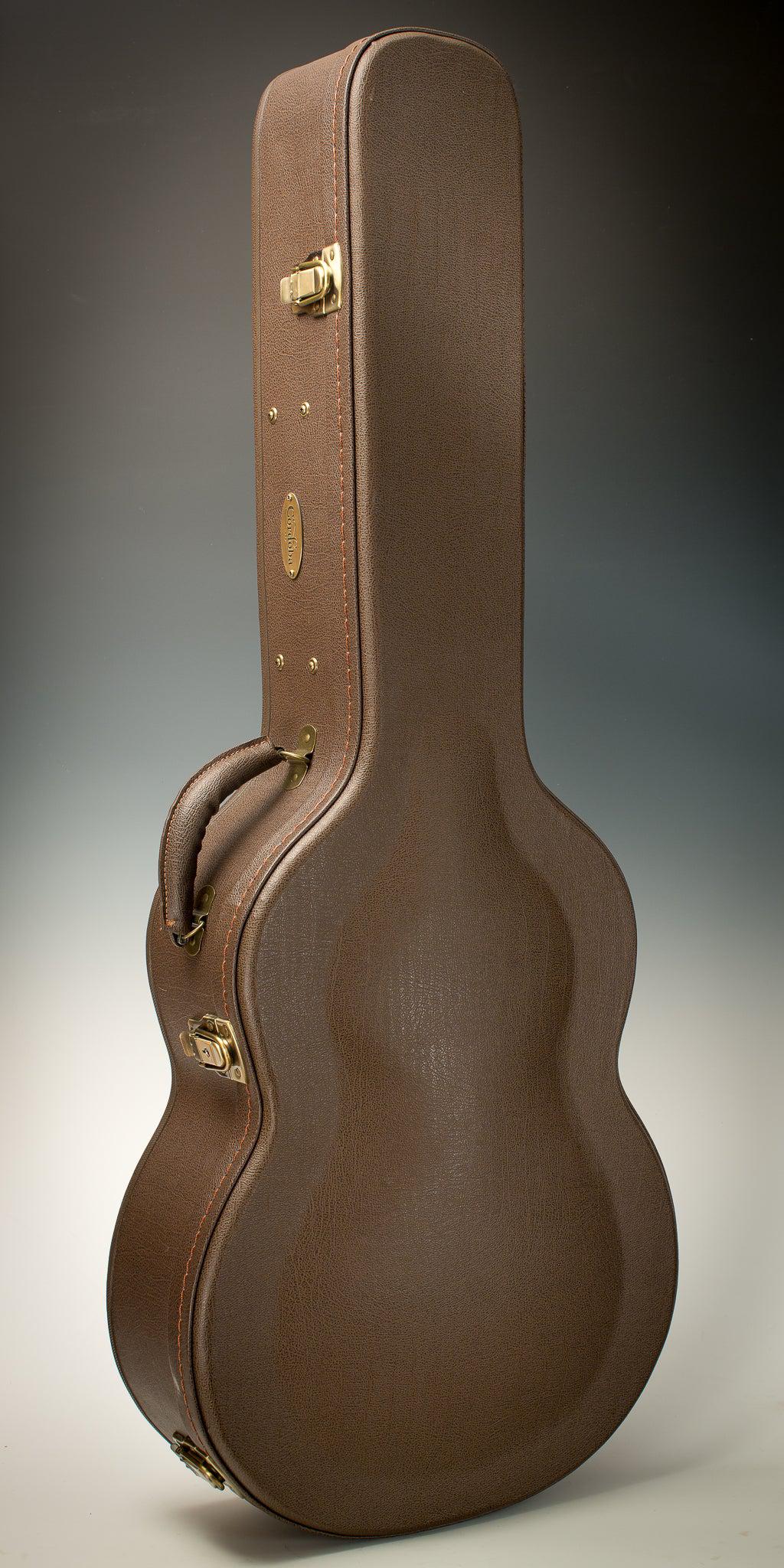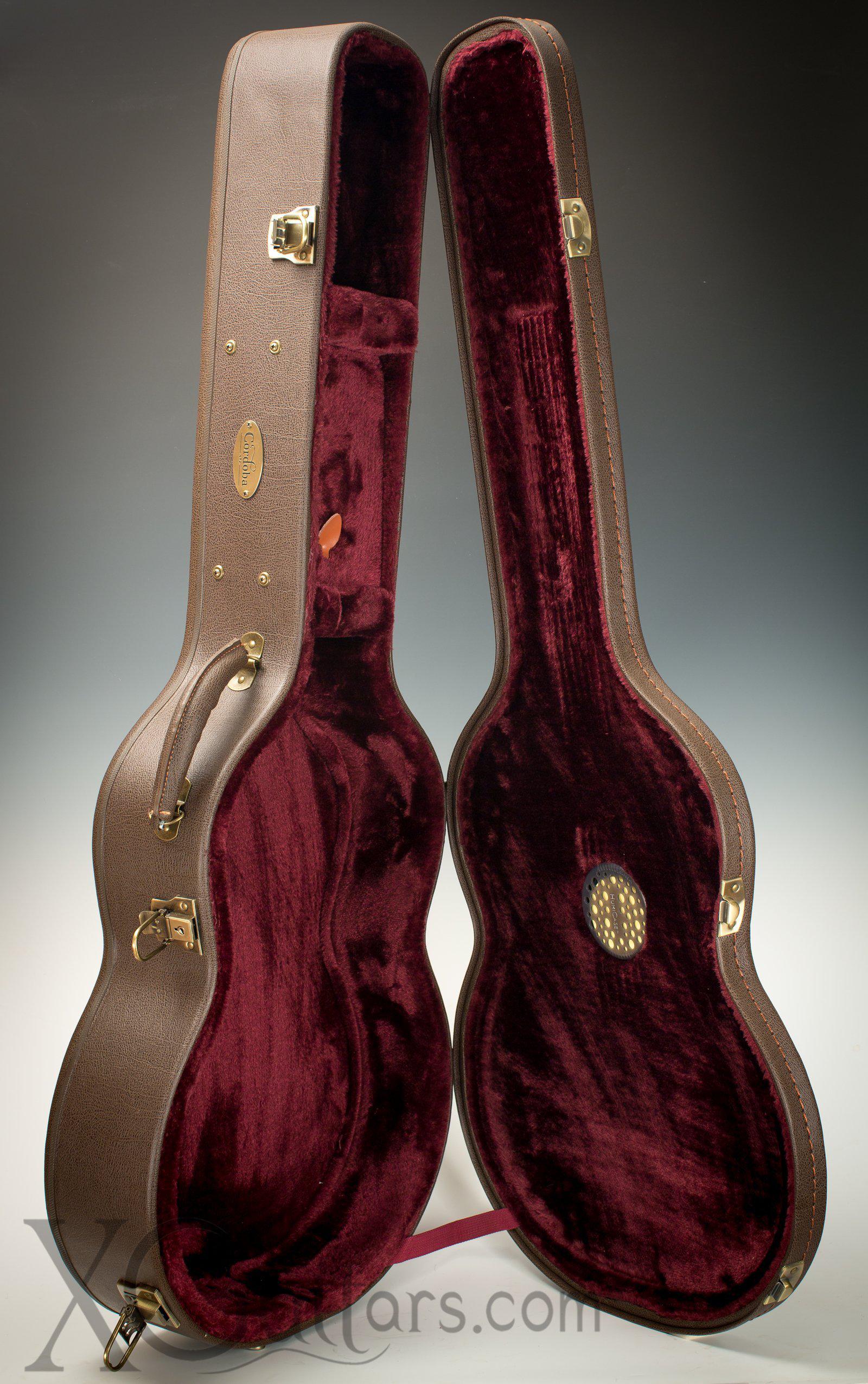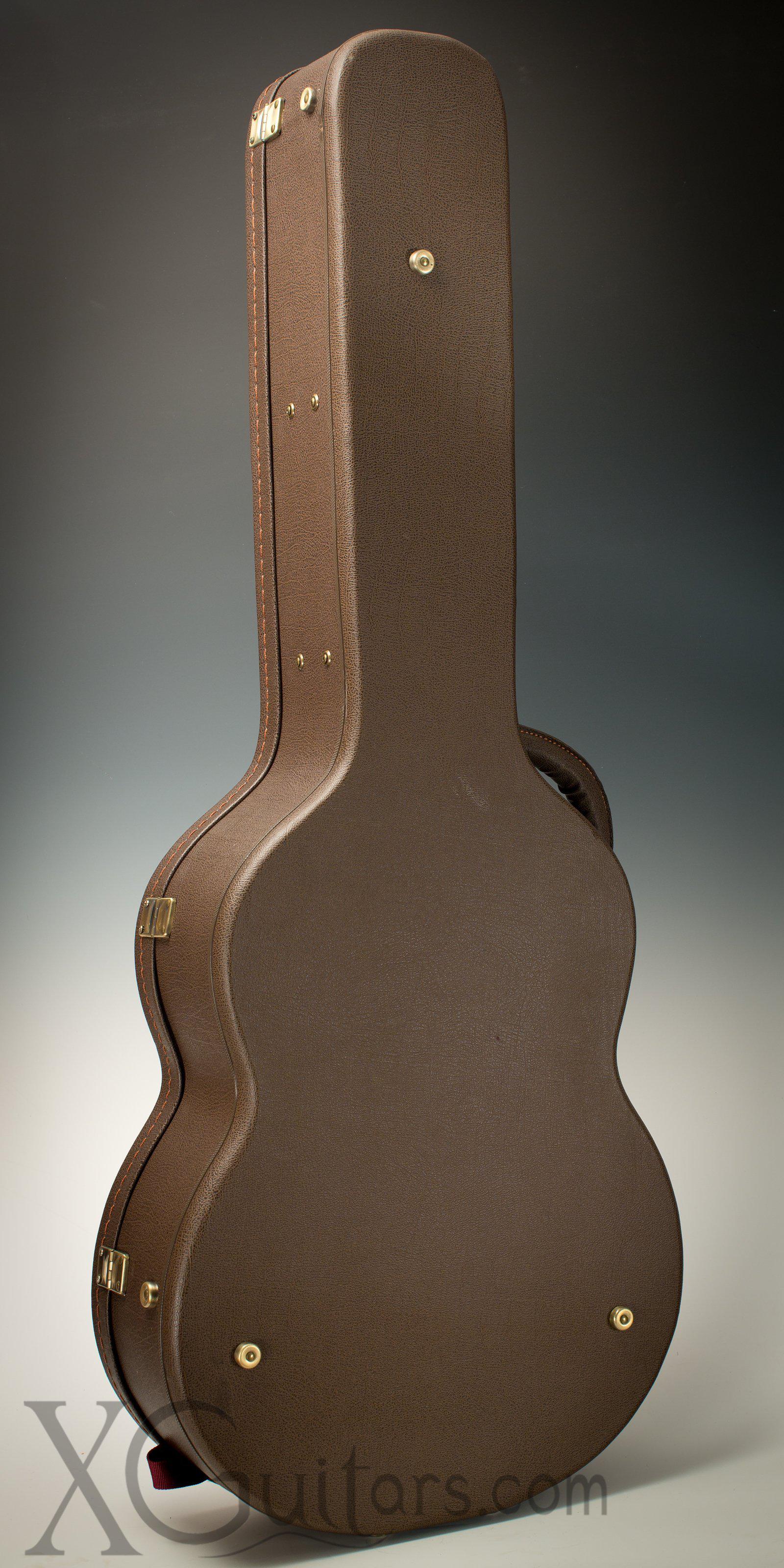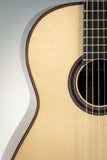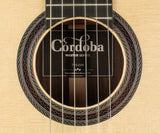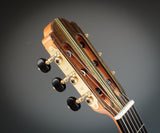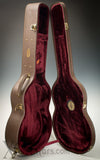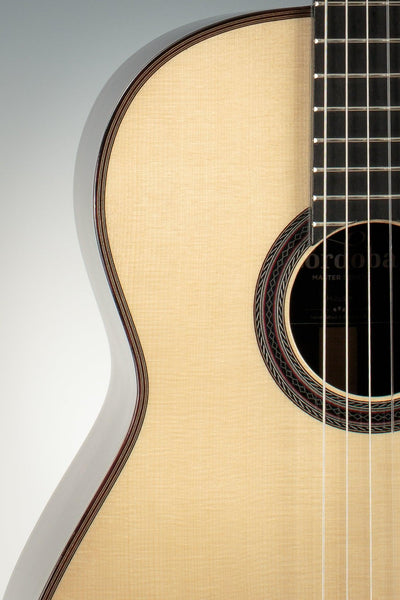Description
Cordoba Hauser Spruce Top Classical Guitar
The Hauser sound is famous for its perfect balance and clean separation of voices. Overtones are very controlled and resulting sound is incredibly pure, with a very focused fundamental at the core of every note. Because of this very pure and direct sound, adding color and nuance of sound is up to the player: moving the right hand over the soundhole yields a very liquid and velvety quality of tone, while moving towards the bridge achieves a brighter, almost brassy sound. This style of guitar appeals to the player wanting maximum control over their own dynamic and modulation (tone color) choices. This guitar is handmade in the USA. (Click here to hear the pronunciation of "Córdoba".)
Perfectly balanced and refined.
Materials:
Cordoba's Hauser is built with a solid Englemann spruce top and solid Indian rosewood back and sides. It features a Spanish cedar neck topped with an African ebony fingerboard.A few modern refinements such as a truss rod, geared tuning machines, durable finish, and non-gut strings were added to improve on what was not available in the 1930s but are essential today. The result is an instrument that exemplifies the authentic Hauser design, voicing, and feel, and captures a rare piece of guitar making history.
The Process:
Cordoba obtained a 1937 Hauser model in order to study it inside and out, and play it over and over. The mission was to understand the essence of what gives this iconic guitar such an amazing voice and feel, and then recreate an instrument that possesses these characteristics and carries the same magic in its DNA. The process was a combination of science and feel; the wood thicknesses of the top, backs, sides, and braces were measured to the nearest hundredth of a millimeter, bracing patterns traced and mapped, and details of the materials, inlays, wood grains, and vibrations were all carefully analyzed. The guitar was played and listened to for hours to gain an understanding of the balance between the trebles and basses, resonance of the top, and a sense for the feel and response of the guitar when played in a variety of styles and environments.
Why Hauser?
The late Spanish maestro Andres Segovia is widely regarded as the most prominent figure to demonstrate through his outstanding playing that the guitar should be considered a viable, legitimate concert instrument, alongside the violin and piano. Previously, the guitar was viewed by the larger concert-going public as a somewhat limited folk instrument, belonging at home, or at most as a parlor instrument for the aristocratic elite. After rejecting many of German guitar maker Hermann Hauser's first attempts at building a Spanish style instrument, Segovia finally accepted one built in 1937, deeming it the greatest guitar of our epoch. It was with this Hauser that Segovia tirelessly concertized and recorded for decades, winning over audiences and critics little by little until the classical guitar's position was secured as a concert worthy instrument. This 1937 Hauser is now regarded one of the most iconic guitars in history. It now resides in the Metropolitan Museum of Art in New York.
Photos of the exact instrument you would receive available on request.
Made in USA
Top: Solid Engelmann Spruce
Back/Sides: Solid Indian Rosewood
Neck: Mahogany
Fingerboard: Ebony
Fret Markers at Frets: V & VII
Rosette: Mosaic & Rope Design Marquetry
Tuners: Master Series Tuning Machines - Ebony
Scale: 650mm
Nut: 52mm
Nut/Saddle: Bone
Truss Rod: Two-way Adjustable, 9/64"
Bracing: 1937 Huaser 7 Fan Bracing
Finish: Nitrocellulose Lacquer
Case: Hardshell Cordoba Humidified Archtop

